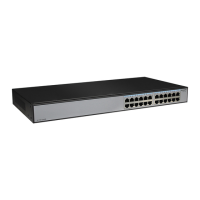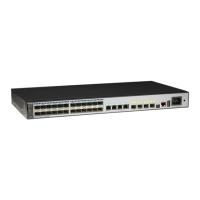10.1 Overview of the Routing Policy
By using routing policies, you can flexibly control the routes to be sent or received.
Routing Policy
Routing policies are used to filter routes and control the receiving and advertising of routes. By
changing the route attributes such as reachability, you can change the path that the traffic passes
through.
When a switch sends or receives routes, it may use certain policies to filter routes. The policies
are used in the following situations:
l Send or receive routes that meet the matching rules.
l A routing protocol such as the Routing Information Protocol (RIP) needs to import the
routes discovered by other routing protocols to enrich its routing information. When
importing routes from other routing protocols, the switch may import certain routes that
meet the matching rules, and set attributes of the routes imported to meet the requirement.
To implement a routing policy, you must:
l Define a set of matching rules and setting rules. The policy is applied to the routing
information to meet the requirements of the matching rules.
l Apply the matching rules to the routing policies for route advertisement, reception, and
import.
Differences Between Routing Policy and PBR
Different from the forwarding by searching the Forwarding information base (FIB) according
to the destination address of a packet, Policy-based routing (PBR) is a route selection mechanism
based on policies set by users. PBR supports the information based on the source address and
the length of a packet. PBR selects routes according to the set policy. PBR can be applicable to
security and load balancing.
Routing policies and PBR are different concepts. Table 10-1 shows the differences between the
two concepts.
Table 10-1 Differences between routing policy and PBR
Routing policy
Policy-based routing
Forwards packets based on the
destination address in the routing table.
Forwards packets based on the policy. If packets
fail to be forwarded, the device forwards packets
by searching the routing table.
Based on the control plane and serves
the routing protocol and routing table.
Based on forwarding plane and serves for the
forwarding policy.
Combines with the routing protocol Needs to be manually configured hop by hop to
ensure that the packet is forwarded through the
policy.
S6700 Series Ethernet Switches
Configuration Guide - IP Routing 10 Routing Policy Configuration
Issue 01 (2012-03-15) Huawei Proprietary and Confidential
Copyright © Huawei Technologies Co., Ltd.
592

